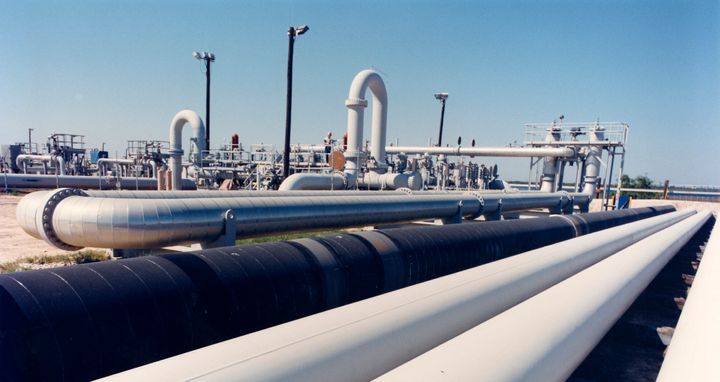
President Joe Biden’s White House on Friday issued new guidance for federal agencies to assess greenhouse gas emissions and climate change impacts when reviewing proposed infrastructure projects.
The updated guidance from the White House Council on Environmental Quality furthers the administration’s reversal of a major Trump-era move, the industry-friendly overhaul of the National Environmental Policy Act, one of the country’s bedrock environmental laws. It is a supplement to a White House rule last year that required federal agencies to once again evaluate all climate environmental impacts when reviewing pipelines, power plants, airports and other projects.
NEPA reviews “should quantify proposed actions’ [greenhouse gas] emissions, place GHG emissions in appropriate context and disclose relevant GHG emissions and relevant climate impacts, and identify alternatives and mitigation measures to avoid or reduce GHG emissions,” the new guidance reads.
CEQ Chair Brenda Mallory said in a statement that the guidelines will “ensure we’re building sustainable, resilient infrastructure for the 21st century and beyond.”
Since 1970, NEPA has protected air, water and land by requiring federal regulators to conduct detailed environmental assessments of major infrastructure projects. In 2020, the Trump administration finalized the first major update to the law in more than four decades, part of a broad administrative effort to fast-track energy projects and other development. Along with allowing agencies to ignore climate impacts, the rewrite largely cut out the public from the environmental review process. Critics condemned the rollback as an attack on environmental justice, as low-income people and communities of color are often most impacted by large-scale infrastructure projects.
The White House council’s new recommendations replace and build upon 2016 guidance from the Obama administration that the Trump administration rescinded shortly after taking office. Along with prioritizing greenhouse gas emissions in the environmental review process, the guidance calls on federal agencies to “identify any communities with environmental justice concerns” and to “consider how impacts from the proposed action could potentially amplify climate change-related hazards such as storm surge, heat waves, drought, flooding, and sea level change.”
The guidance also distinguishes between renewable energy projects and carbon-intensive infrastructure, instructing regulators to “apply the rule of reason when determining the appropriate depth of analysis.”
“Absent exceptional circumstances, the relative minor and short-term GHG emissions associated with construction of certain renewable energy projects, such as utility-scale solar and offshore wind, should not warrant a detailed analysis of lifetime GHG emissions,” it reads.
The White House directive comes after a sweeping permitting reform package, spearheaded by Sen. Joe Manchin (D-W.Va.), repeatedly failed to garner enough support in the Senate.
Environmental groups applauded the new NEPA guidance. Abigail Dillen, president of Earthjustice, called it “a huge achievement for frontline communities fighting to make their voices heard across the country” and “essential to leading federal agencies on our path to a just, zero emissions future.”
